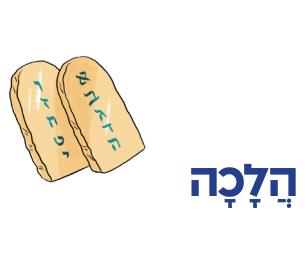Illustration Credit: Elad Lifshitz, Dov Abramson Studio

Halakhah הֲלָכָה
Both of Yosef’s dreams in the beginning of the parashah feature his brothers bowing down to him—first as bundles of wheat and then as the stars (Bereishit 37:6-9).
Bowing is not something that we normally do in our lives, but it has been an important part of showing submission to authority—both to humans and to God—throughout history. In fact, one kind of bowing called “full prostration,” which means lying face down on the floor, used to be a central component of Jewish tefillah. For example, it is said that Rabbi Avraham, son of the Rambam, used to prostrate fully in every blessing of the Amidah. Nowadays, this kind of bowing is reserved for certain tefillot on Rosh Hashanah and Yom Kippur.
However, there are situations when Jewish law prohibits bowing fully, even on the High Holidays. This prohibition is traced to a story in the Talmud:
רַב אִיקְּלַע לְבָבֶל בְּתַעֲנִית צִבּוּר…
נְפוּל כּוּלֵּי עָלְמָא אַאַנְפַּיְיהוּ
וְרַב לָא נְפַל עַל אַנְפֵּיהּ.
Rav came to Bavel on a public fast day… everyone fell on their faces, but Rav didn’t fall on his face.
The Talmud explains that Rav didn’t bow because the floor he was standing on was stone, and outside of the בֵּית הַמִּקְדָשׁ (Beit Ha-Mikdash, Temple in Jerusalem), it is forbidden to prostrate on stone (based on Vayikra 26:1).
Based on this story, Jewish law forbids bowing down fully on a stone floor. According to most authorities, bowing halfway (at the waist) is okay.
In shuls with stone floors, this poses a potential problem on Rosh Hashanah and Yom Kippur.
The Rema (Orah Hayyim 131:8) says that people can put some grass on the ground to create a barrier between themselves and a stone floor. Nowadays, when prostrating on Rosh Hashanah and Yom Kippur, some people place a paper towel or a cloth in front of them so that their clothes and heads do not touch the stone floor while bowing.
-------------------
-------------------





